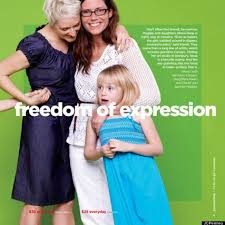The ‘rebirth’ of LGBT advertising has yet to include lesbians and transwomen
“How does sexual identity influence the way we live?” In a talk detailing the cultural history of the LGBT community in advertising, Ogilvy & Mather Worldwide Chief Creative Officer ThamKhai Meng contended that we have entered into the age of “rebirth.”
The talk, entitled “LGBT: Let’s Walk Together,” was offered as a part of The One Club’s “Creative Week,” a week long convention in New York City for the advertising and design industries. Intended to promote “creativity for the greater good” through a series of panels and presentations, business insiders discussed how these industries engage with and reflect an increasingly globally, connected world.
Meng’s presentation on “the long journey toward inclusion” hinged on the sea change of LGBT acceptance beginning in the 1990s, after the AIDS Crisis marked the reimagining of the gay individual as a human being in the collective cultural consciousness. Before that time, in advertising the LGBT community was only marketed to through the use of subliminal codes, which Meng called “gay window dressing,” as featured in an ad for Ivory Soap:
Gay male homoeroticism was pervasive in ads throughout the 20th century. This trend toward serving the “G” population, primarily if not solely, still holds today—which isn’t surprising, since the largest percentage of the “pink dollar” is wielded by gay white men.
“How do you market to a minority community based on the defining characteristic of the community being invisible?”
Meng had very little data on the lesbian consumer, and there was no advertorial footage provided to demonstrate if and how businesses advertise to lesbians, even though we in the lesbian community are familiar with the bevy of recent mainstream campaigns featuring Ellen DeGeneres for brands such as Covergirl and JCPenny.
What was interesting about Meng’s presentation was the representation of the lesbian and gay community. How do you market to a minority community based on the defining characteristic of the community being invisible? The way that homosexuality has been rendered visible in media is by partnering up two people of the same sex and capturing an intimacy between them, such as the JCPenny ad, depicted here.
Marketing to the trans* community is an even more nascent enterprise. Meng’s only example of advertising directed specifically to transwomen—a 2011 ad for Wonderbra—is suggestively, even insidiously, stamped by the word “transsexual” at the very beginning of the ad, as if the audience needs to know that this woman isn’t “real,” or that, by the tone of the soundtrack, she has a “secret.” Indeed, the collection of ads is called “Transsexual Secrets.”
Advertisers are slowly, but surely, turning their attention to the female consumer, who will, accordingly to estimates, come to control over two-thirds of consumer wealth over the next decade. Let’s hope that brands and their advertisers learn how to market products decorously, with respect, to all women consumers, gay and straight, cis and trans.
